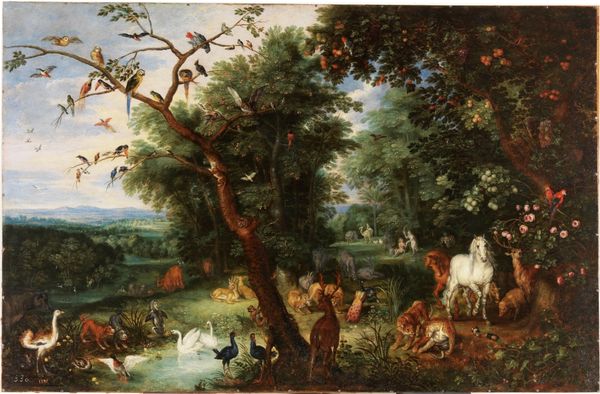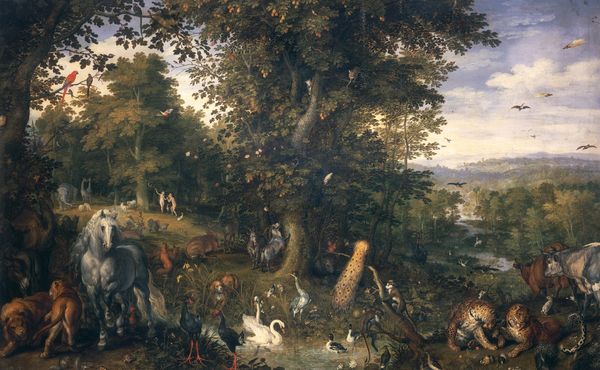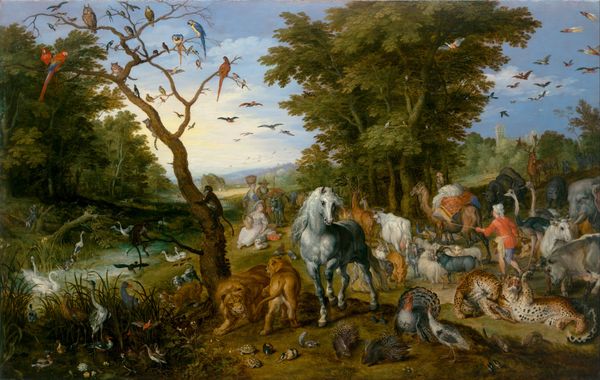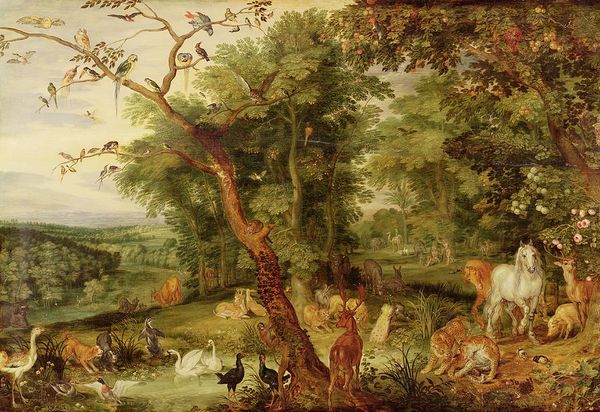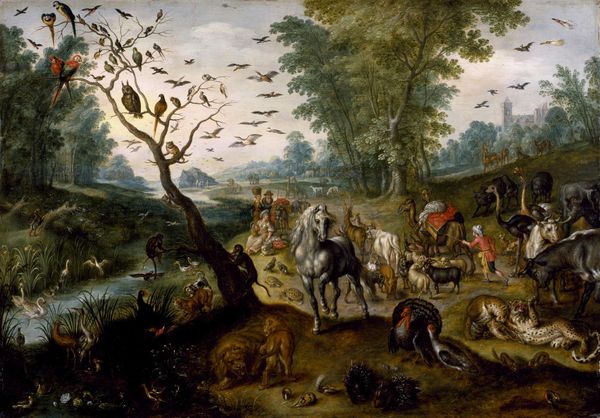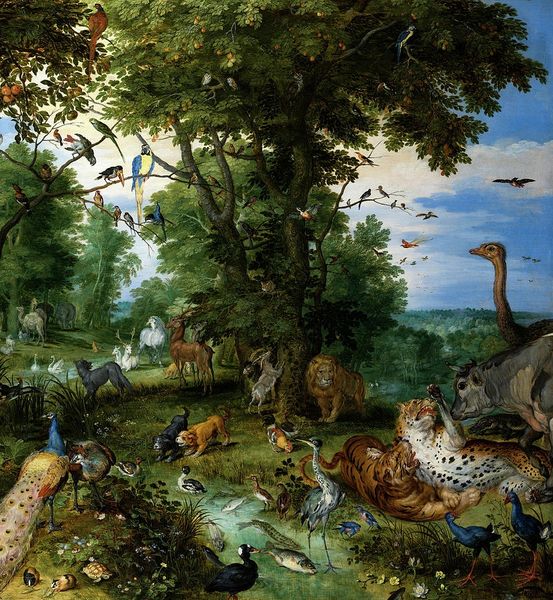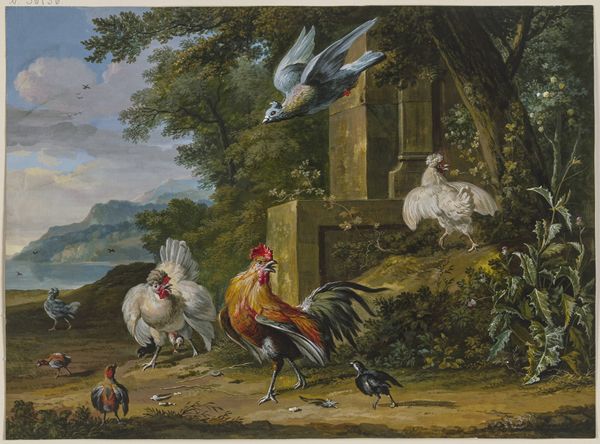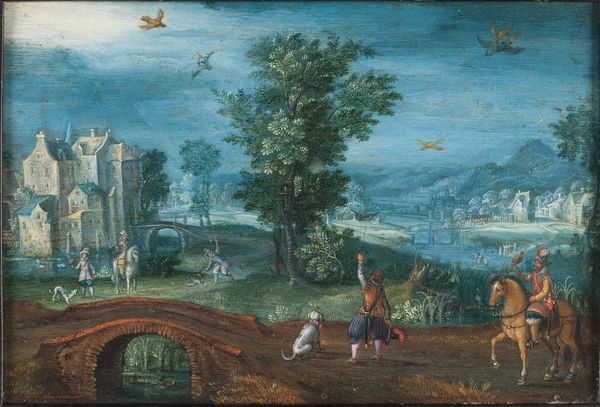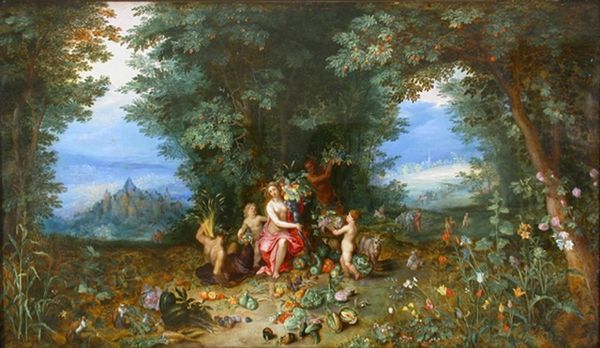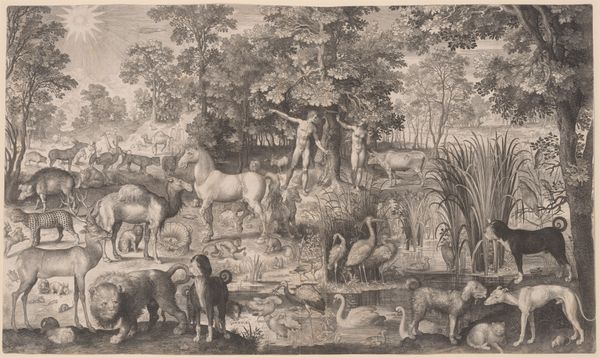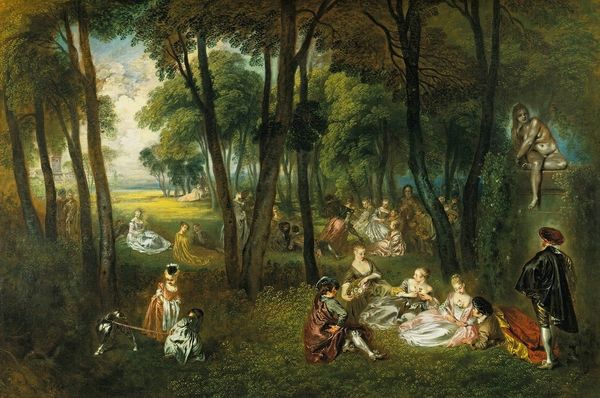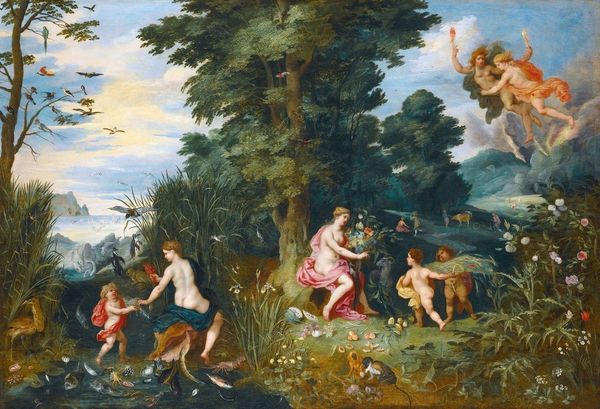
painting, oil-paint, oil
#
woman
#
baroque
#
animal
#
painting
#
oil-paint
#
oil
#
landscape
#
figuration
#
oil painting
#
14_17th-century
#
genre-painting
Dimensions: 28.8 x 36.6 cm
Copyright: Public Domain
Curator: Welcome. Here we have "Paradise with the Creation of Eve," painted around 1636 to 1640 by Jan Brueghel the Younger. It's an oil painting currently housed here at the Städel Museum. What are your initial thoughts? Editor: It strikes me as…crowded. Overwhelming, even. There’s a cacophony of creatures, almost cartoonish in their varied depictions, nestled within what I suppose is meant to be a serene garden setting. Curator: "Crowded" is a good word. Brueghel's style, heavily influenced by his father, Jan Brueghel the Elder, often involved densely populated scenes. We have to consider the prevailing social context too, specifically how wealthy patrons desired works that displayed abundance and knowledge of the world, like a miniature cabinet of curiosities on canvas. Editor: Precisely! Notice how each animal seems less an individual creature and more a symbolic representation. The lion for strength, the horse perhaps nobility...even the monkeys could stand for something like vanity, observing themselves at the scene. Curator: And look at the way Eve is presented—almost as an afterthought nestled deep in the forest. The religious narrative feels almost secondary to the display of natural wealth and diversity. We need to acknowledge the societal dynamics too, though. The image, and the narrative it pulls from the genesis myth, reinforced gender roles, and a sense of divinely sanctioned social order. Editor: True. Visually, the light falling on Adam is worth mentioning. It could reference a visual tradition highlighting male rationality against Eve, whom he emerges from here to guard as a partner in the landscape and as the image seems to tell, civilization to come. Curator: It also prompts considering how such paradisiacal depictions served the ideological interests of the wealthy elite. Owning this picture, demonstrating understanding, claiming divine justification for privilege. It becomes part of their overall narrative. Editor: A gilded cage of exotic creatures, so to speak, that is as artificial as the scene. Well, these visual narratives certainly add layers beyond the aesthetic, and makes you reflect about its original location of use. Curator: Exactly! And the layers ripple out through society influencing attitudes, beliefs. Looking beyond the frame to understand its real-world impact enriches my understanding.
Comments
Join the conversation
Join millions of artists and users on Artera today and experience the ultimate creative platform.
